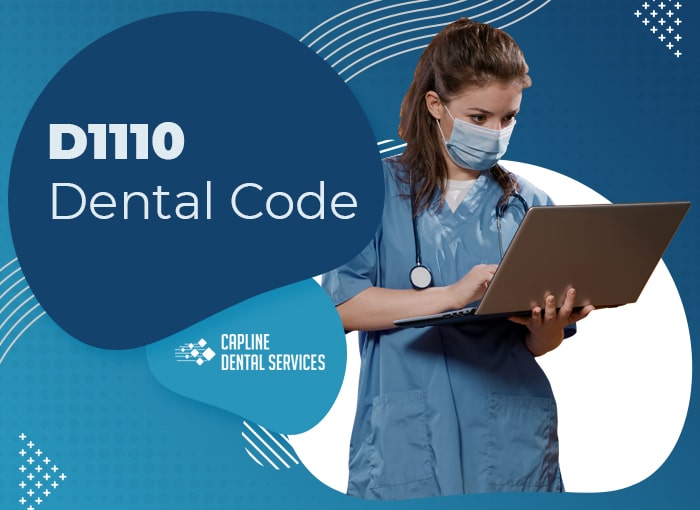CDT D1110 Dental Procedure Code
Dental coding is sometimes confusing. It is constantly changing, and keeping up with the update helps RCM. D1110 stands for adult prophylaxis visit, and the description reads it is performed on the transitional or permanent definition that includes scaling and polishing to remove plaque, calculus, and stains from the tooth structures. It helps to control the local irritation factors. The description says coronal deposits meaning above the gumline.
When to bill D1110 (Prophylaxis visit)
- It is appropriate for general dentist (GP) service providers.
- The patient shows no sign of deep pockets or periodontitis.
- This code is for adult prophy, that is, the patient is 14 years or older, as it will have age limitations and exclusions from the carrier.
- Not including full mouth debridement D4355.
The patient does not have a previous history with periodontal therapy such as root planing and scaling, ongoing periodontal maintenance visits, or osseous surgery.
The patient has upper and lower dentures or is completely edentulous with supporting documents or narratives.
According to CDT, a periodontal maintenance visit includes periodontal therapy at varying intervals determined by the clinical evaluation for any implant replacement or the life of definition. It includes plaque and calculus removal from supragingival and subgingival regions. The visit follows teeth polishing, site-specific scaling, and root planing. If recurring or new periodontal disease occurs, procedures and treatments are incorporated.
Coding following Periodontal care to Prophylaxis visit
Many times patients come back for a three-month appointment. The patient periodontal condition is stable.
Can the patient go back to D1110?
After the clinical judgment, the dentist determines that routine prophylaxis care is needed. Here D4910 is the correct coding. As per ADA (The American Dental Association), it is a clinical evaluation, and D1110 is applicable. Later, you cannot report it as D4910 without a new treatment or diagnosis of active infection with a bone loss.
D1110 and D4910 are not interchangeable coding and do not alter as that would lead to reimbursement fraud.
Key points what offices should do?
- ADA intends to use the code D1110 for all cases that do not involve periodontal diseases.
- Third-party interprets D1110 as cleaning for age above 14 years and sometimes for erupted second molars.
- D1110 gets twice per year limit payments with one payment every six months meaning a complete six-months pass between each D1110 procedure and benefit to apply.
- If double prophy occurs D1110 x 2, the carrier may pay for two appointments now with no benefits for that year. OR Pay for one prophy now, and the second for the patient to pay.
- For double prophy, the D1110 code gets used for each visit. Also, attach a brief note or narrative with the claim form stating the heavy deposits and stains to support the treatment.
- Intraoral photos or radiographs help in learning the pertinent issues.
- For extended-time prophy, use D1110 with time spent data to make accurate reporting.
